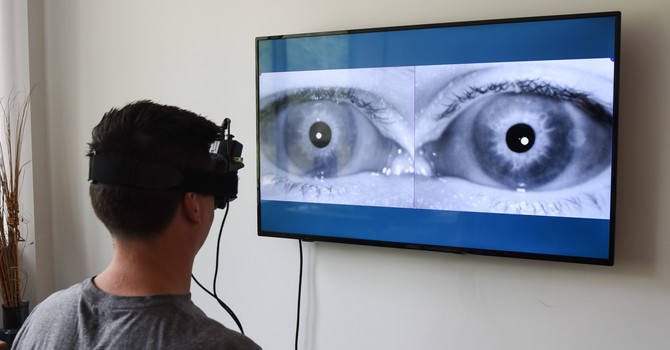
If you’ve ever felt dizzy, struggled to read a page, lost your place while scanning a room, or found your focus slipping for no clear reason… your saccades may be part of the problem.
What Are Saccades?
Saccades are the quick, jerky eye movements your brain uses to shift visual focus from one point to another. They happen every few seconds — when you scan a room, read a book, or glance between road signs while driving.
In a healthy brain, saccades are:
-
Fast
-
Accurate
-
Well-coordinated
-
Involuntary (you don’t even notice them)
But when your brain isn’t functioning optimally, those movements can become slow, sloppy, fatigued, or delayed — and that can ripple out into a range of frustrating symptoms.
Why Saccades Matter
Your brain relies on efficient eye movements to build a stable internal map of the world. If saccades are off, your perception gets messy — and your symptoms often reflect that.
Impaired saccades can lead to:
-
Reading difficulties (losing your place, skipping lines, slow comprehension)
-
Visual motion sensitivity
-
Headaches with screen use or text
-
Dizziness when shifting gaze
-
Attention or memory struggles
-
Poor balance or coordination
And because saccadic eye movements require precise timing from multiple areas of the brain, dysfunction here often points to broader neurological dysregulation — especially after concussion, brain injury, or chronic stress.
What Causes Saccadic Dysfunction?
Saccades are controlled by a network that includes the frontal cortex, parietal lobe, brainstem, and cerebellum. When any of these regions are compromised, your eye movements can suffer.
Common contributors include:
-
Concussion and traumatic brain injury
-
Vestibular dysfunction
-
Stroke or neurodegeneration
-
Developmental conditions like ADHD or dyslexia
-
Fatigue, chronic illness, or stress-related dysregulation
Even subtle brain injuries — the kind that don’t show up on standard imaging — can interfere with saccadic control.
How Do We Test Saccades?
In our clinic, we assess saccades both clinically and with technology-assisted testing. We look at:
-
Latency (how fast the movement starts)
-
Velocity (how quickly the eyes move)
-
Accuracy (do they overshoot or undershoot?)
-
Endurance (do the eyes fatigue or slow down over time?)
We also consider how your saccadic function interacts with balance, head movement, and other visual reflexes. This gives us a more complete picture of your brain’s overall regulation.
Can You Improve Saccades?
Absolutely — and that’s where neuroplasticity-based rehab comes in.
With the right input, we can retrain the brain’s control over eye movements. Saccadic rehabilitation is often part of a broader program that may include:
-
Vestibular and visual exercises
-
Cervical (neck) input to support head-eye coordination
-
Balance and sensory integration
-
Frontal lobe stimulation or cognitive-motor training
We’re not just chasing symptoms — we’re helping the brain become more efficient, adaptable, and connected.
Real Life: Why This Matters
We’ve seen patients who haven’t read a book in years due to headaches or fatigue. Others who couldn’t drive without motion sickness. And still others whose attention span or memory improved dramatically — not from a pill, but from retraining how their eyes and brain communicate.
This isn’t a miracle. It’s the science of precision-based neurorehabilitation — and saccades are one of our best tools for guiding that process.
The Bottom Line
Tiny eye movements can reveal major brain insights. If you're struggling with focus, dizziness, headaches, or reading fatigue — your saccades may be telling the story.
Don’t ignore what your eyes are trying to show you.
Want to get your brain and vision working better together?
We offer in-depth functional evaluations to assess your saccadic function and develop a tailored rehab plan.

Benjamin Pupo
Contact Me



